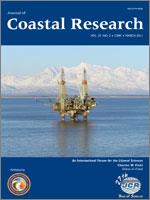Since the United Nations Conference on Environment and Development (1992), the Integrated Coastal Zone Management (ICZM) concept has been adopted by Australian states, including the state of Victoria, as the framework vehicle to guide coastal management. Conceptually vital to the ICZM process is that appropriate environmental, social, demographic, and economic information should be available to all stakeholder groups, such that informed decision making can be supported across the entire catchment–marine–coastal continuum. It has been noted, both internationally and in Australia, that spatial information and related enabling technologies (e.g., geographical information systems –) have much potential to enhance the level of decision support for ICZM practitioners. However, despite much policy innovation regarding ICZM and spatial information infrastructure in Victoria since the early 1990s, stakeholders within the Victorian ICZM program are not yet served by any form of coordinated spatial information provision framework or any capacity-building initiatives vis-à-vis the application of spatial enabling technologies for ICZM. In this paper, we report the findings of an anonymous online survey (responses n = 342) administered to all Victorian ICZM stakeholder groups, which aimed to obtain baseline data regarding spatial information and enabling technology use. Survey results show that despite policy development and innovation at state government level, the current deployment of spatial information and its associated stakeholder-focussed decision-support technology does not meet its potential for decision support in bringing ICZM policy to practice. Results indicate that the initiation of targeted capacity-building programs, aimed specifically at increasing the capability of ICZM practitioners regarding the application of spatial information and enabling technologies, should be considered by lead agencies in order to provide an enhanced level of decision support within the Victorian ICZM program.
BioOne.org will be down briefly for maintenance on 17 December 2024 between 18:00-22:00 Pacific Time US. We apologize for any inconvenience.
How to translate text using browser tools
1 March 2011
Spatial Decision Support for Integrated Coastal Zone Management (ICZM) in Victoria, Australia: Constraints and Opportunities
Peter J. Wheeler,
James A. Peterson,
Lee N. Gordon-Brown
ACCESS THE FULL ARTICLE

Journal of Coastal Research
Vol. 27 • No. 2
March 2011
Vol. 27 • No. 2
March 2011
coastal management
decision support
Geographic Information Systems (GIS)
spatial data infrastructure (SDI)
Spatial information




